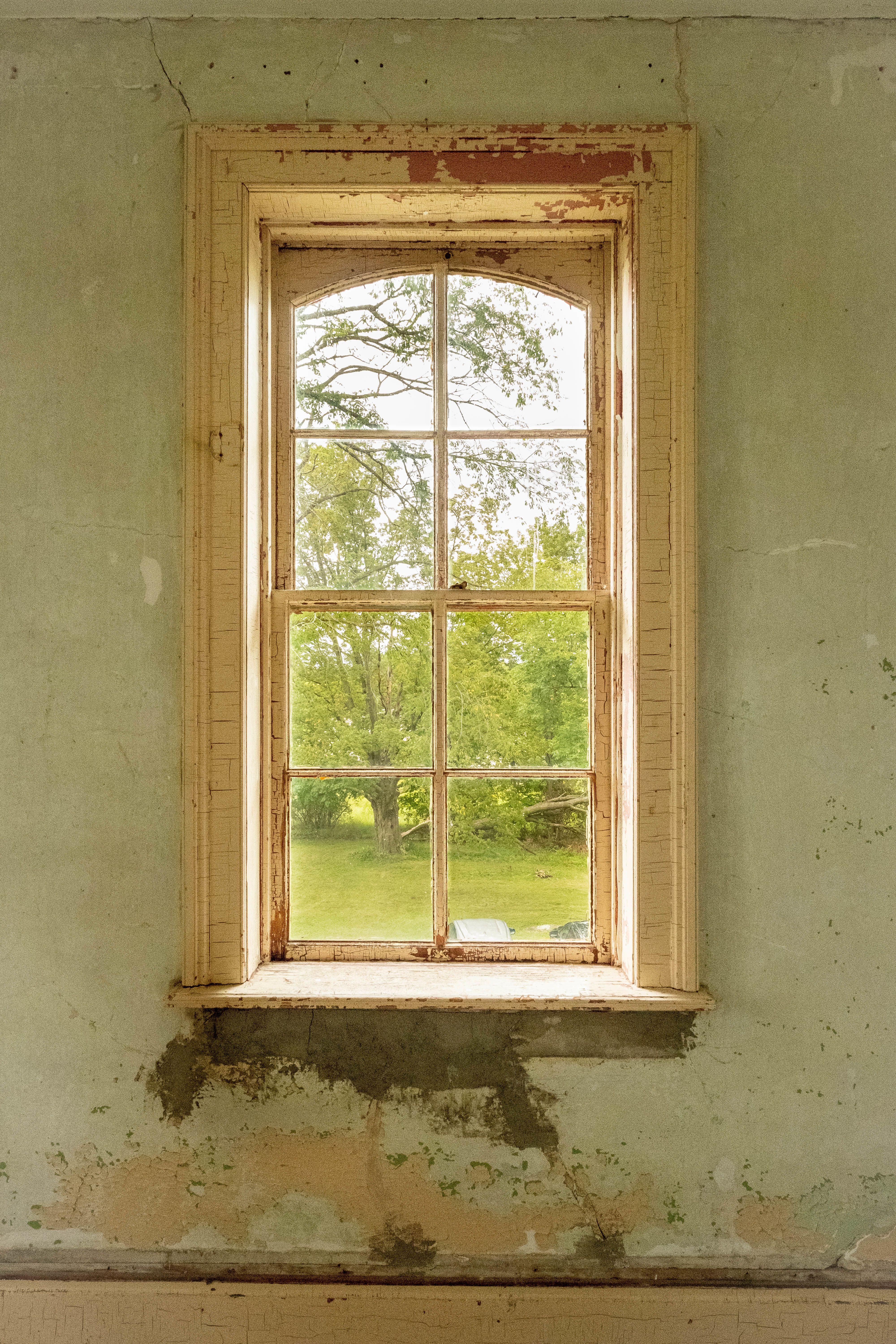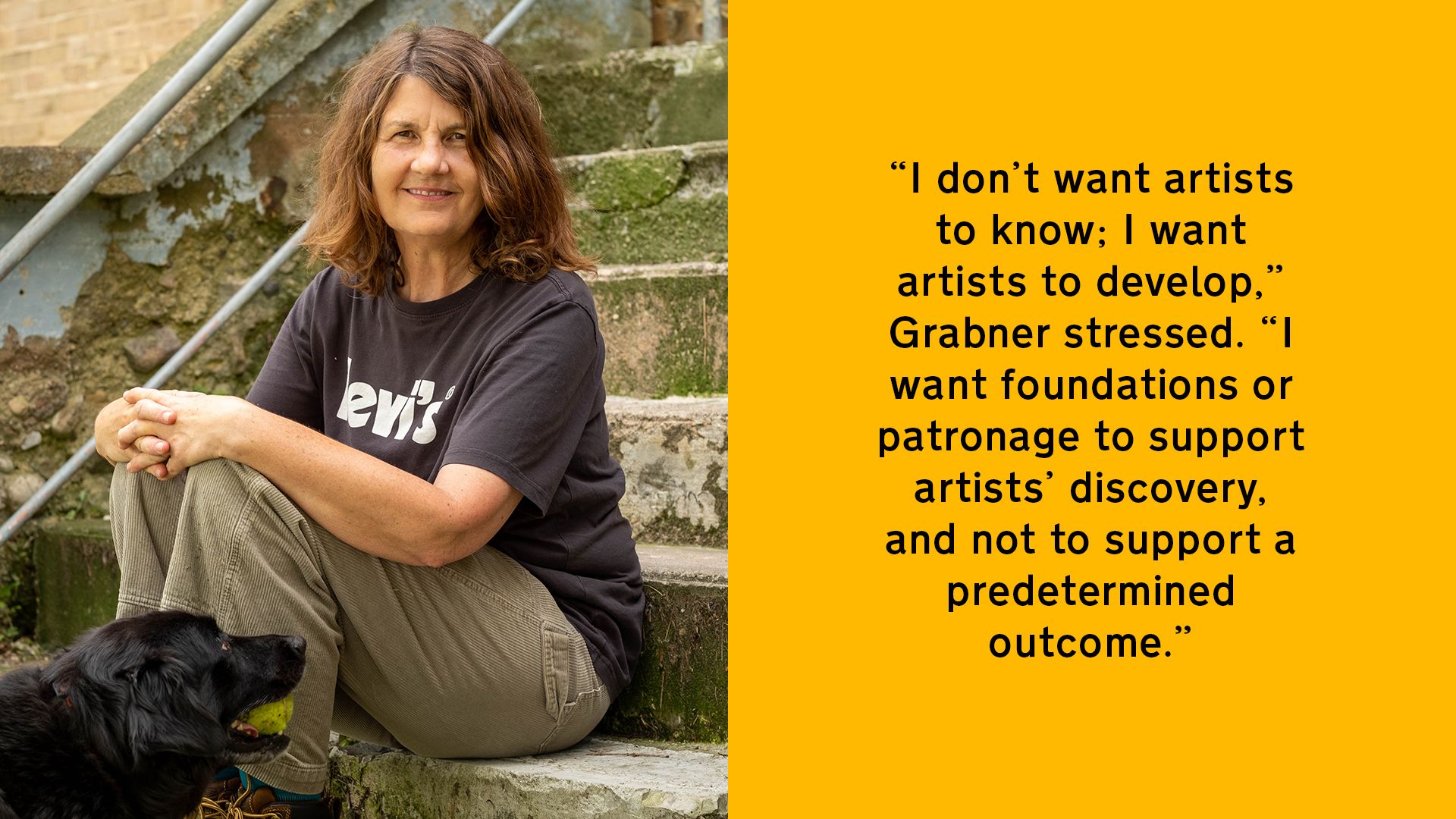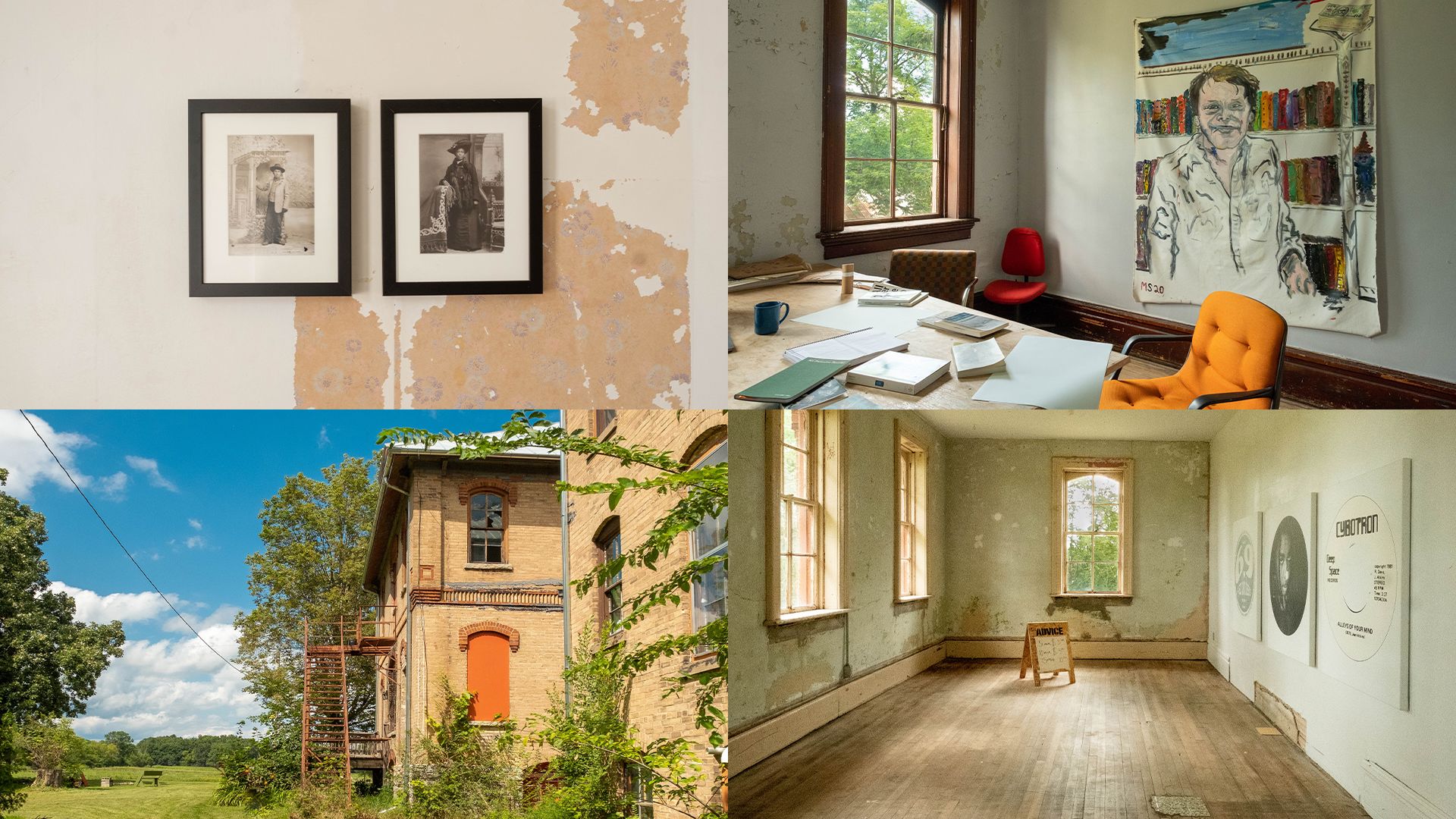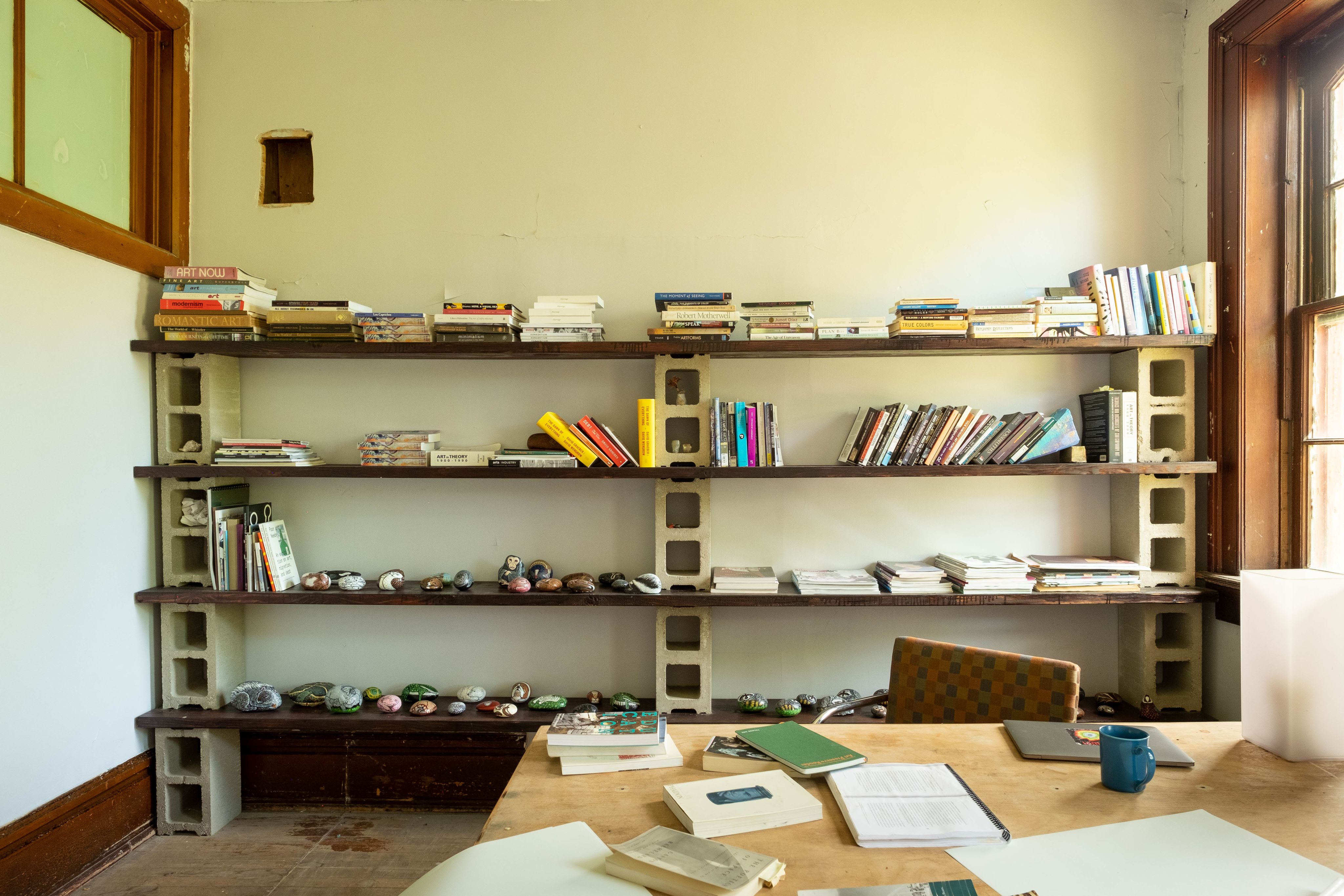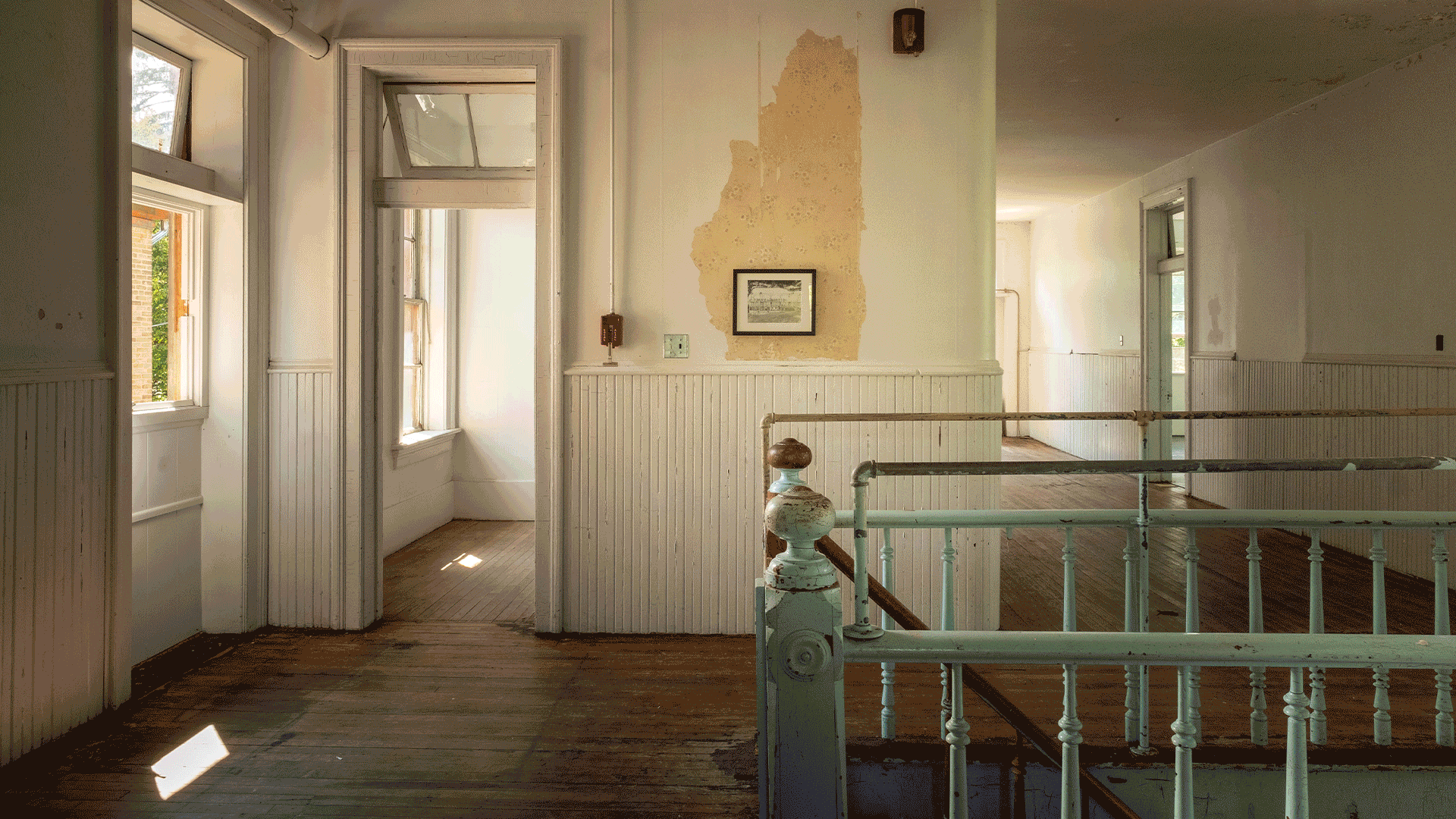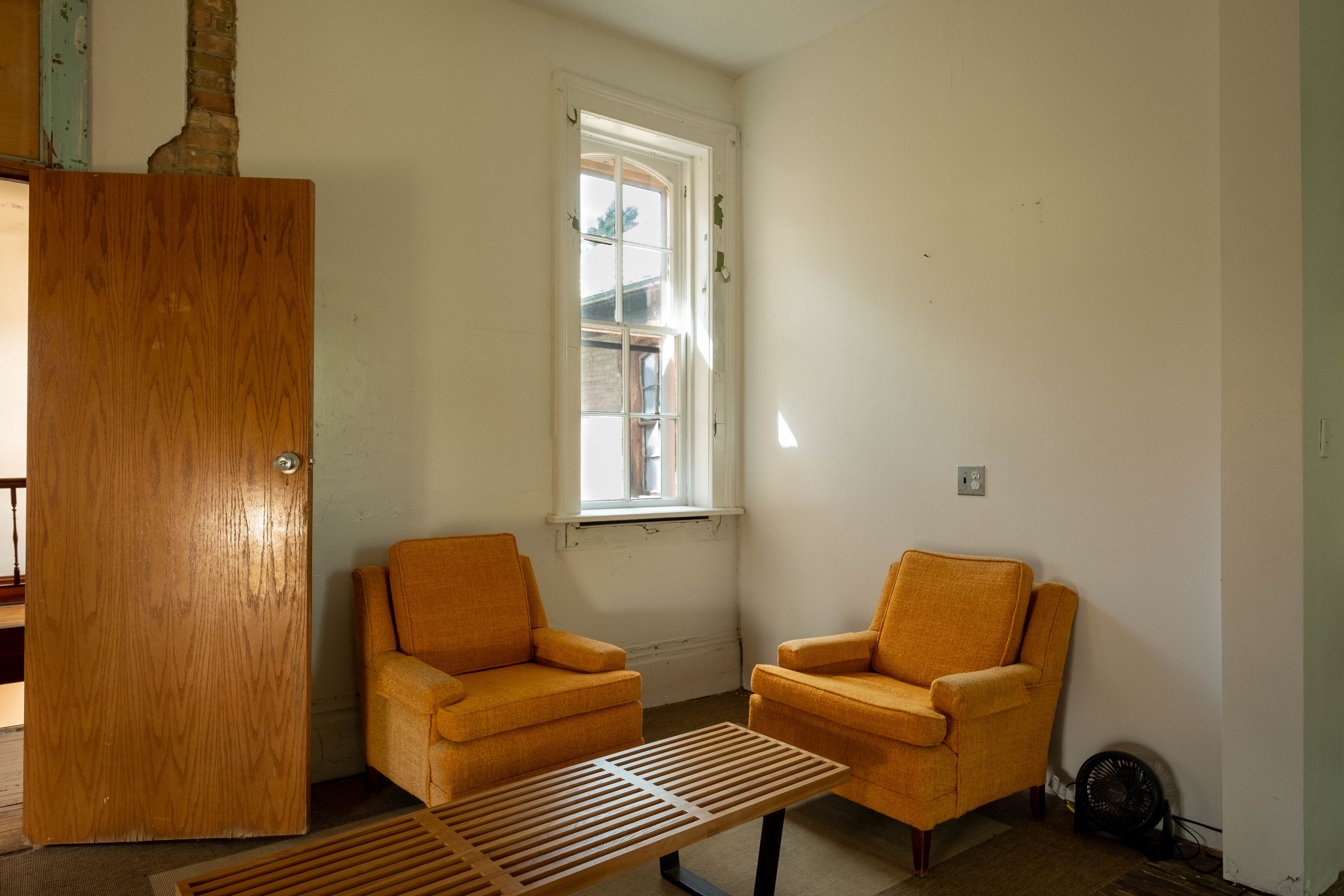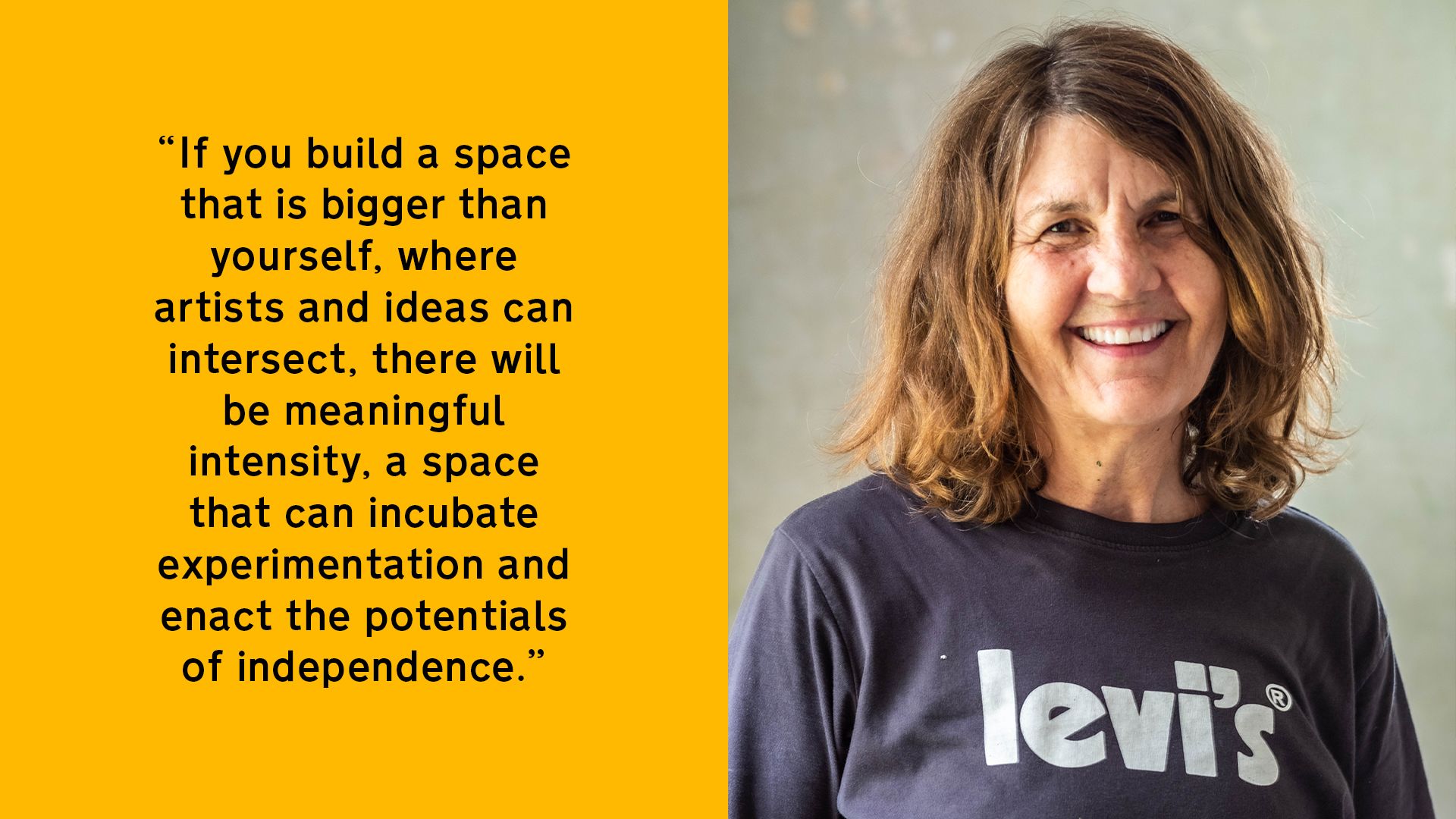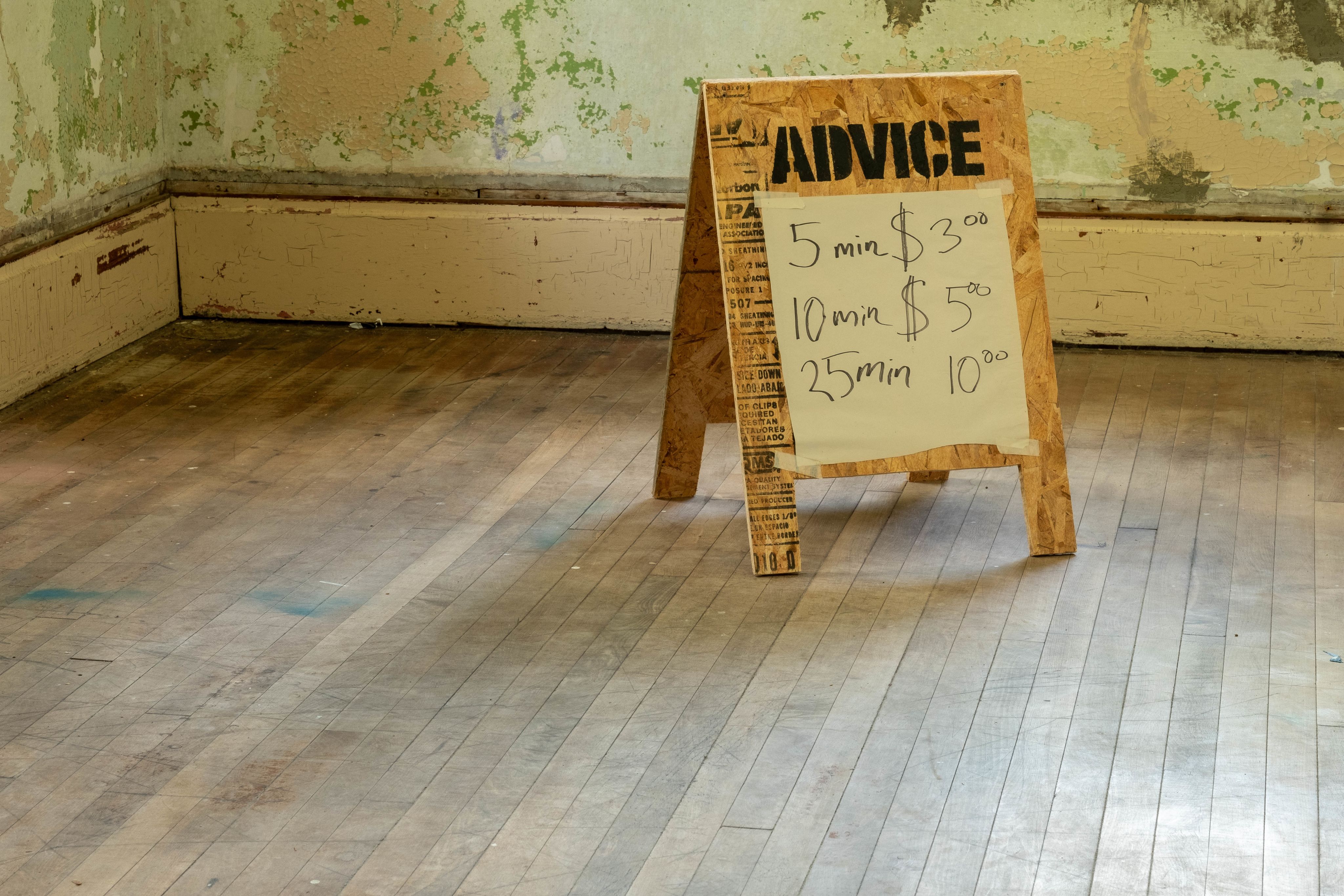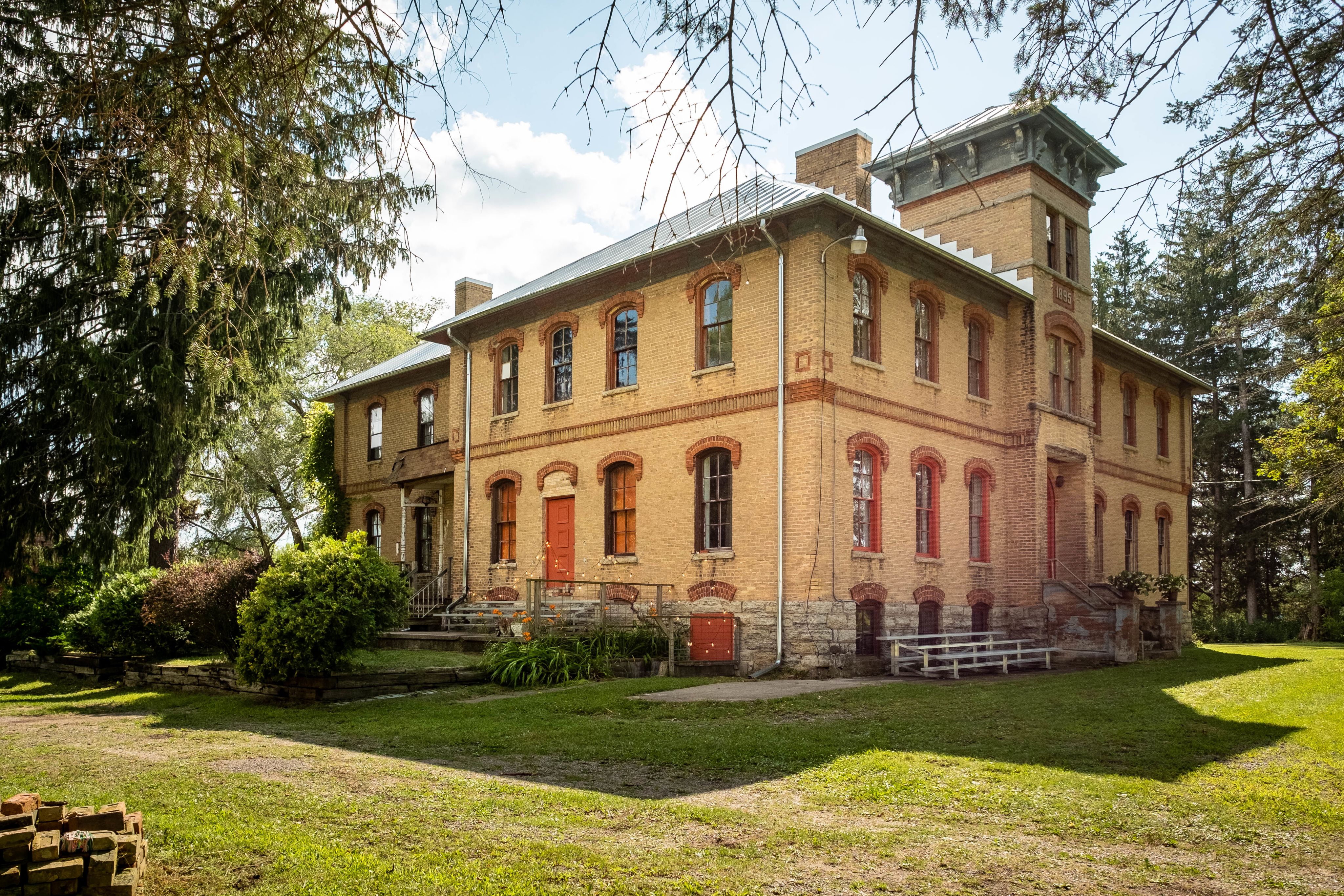The Richness of Poor Farm
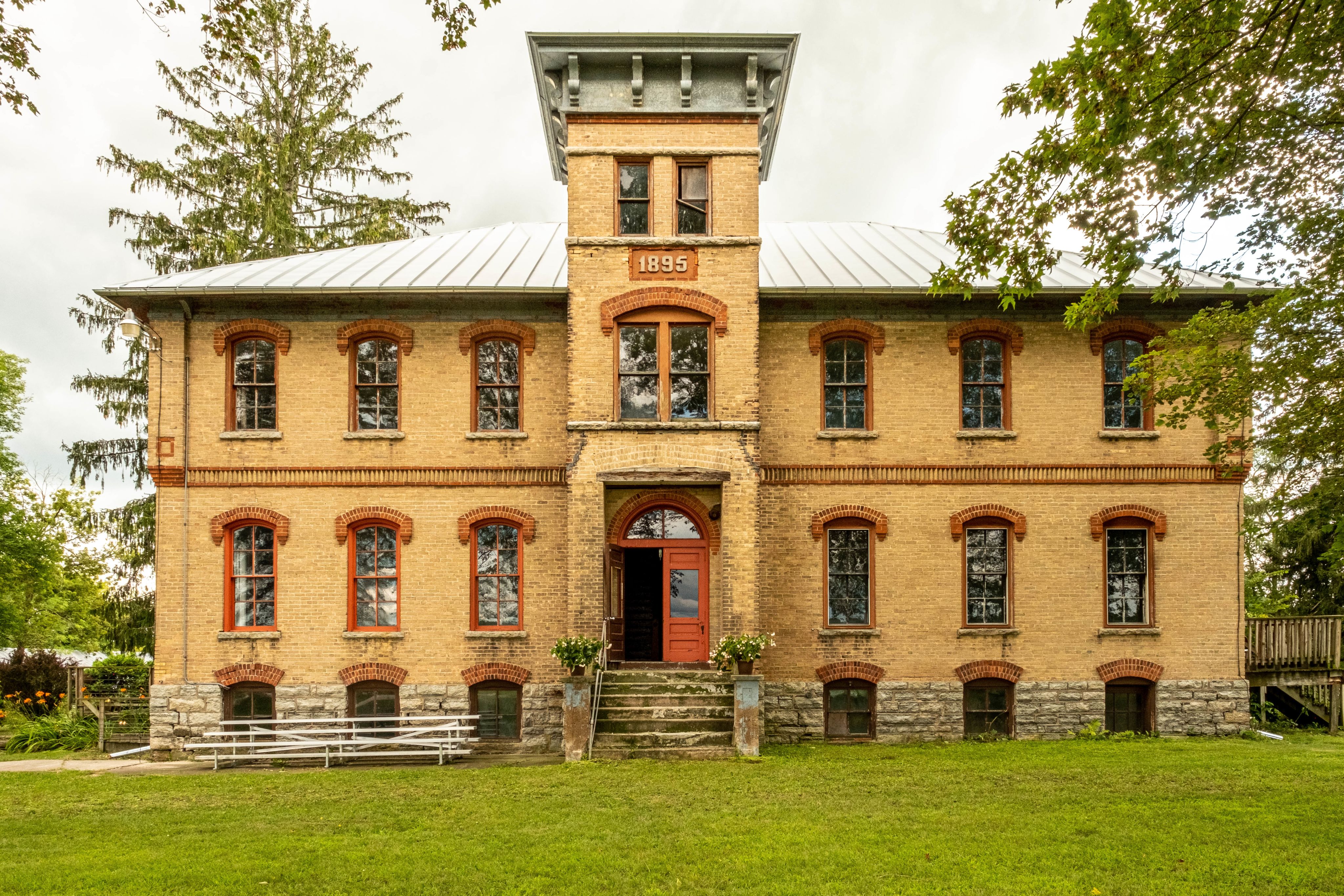
by J. Howard Rosier (MFA 2018)
Photos by Myrica Von Haselburg
On Memorial Day Weekend in 2008, Michelle Grabner and her husband Brad Killam, an artist and professor as well, drove by a property with a “For Sale” sign in Little Wolf, Wisconsin.
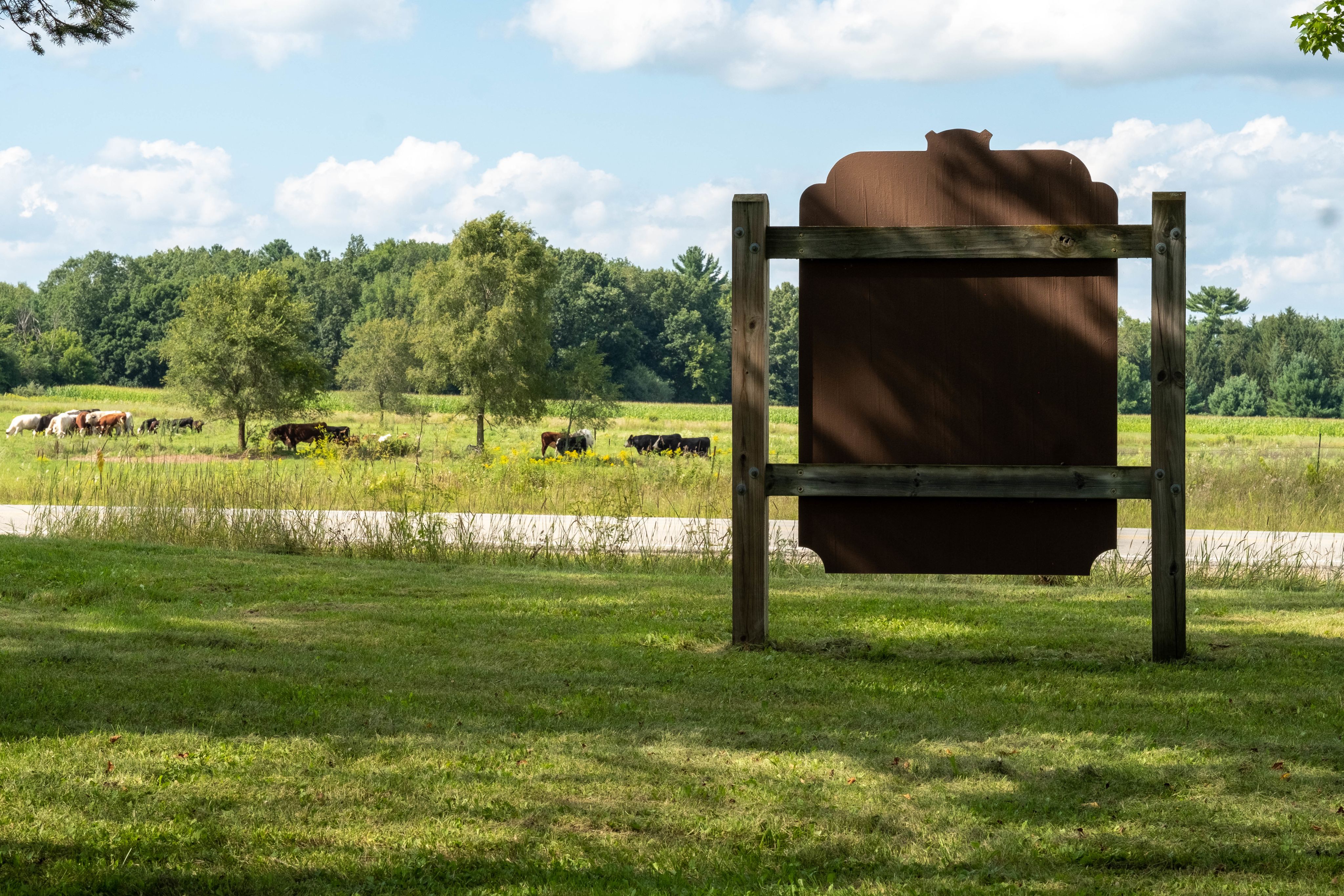
The site housed the remnants of a “poor farm,” rural counterparts to poorhouses that offered housing, clothing, and food for those from impoverished backgrounds in exchange for working the land in the 19th century. The abandoned two-story brick building was surrounded by acres of grass and trees.
They drove on, but the poor farm stayed with them. Months later, Grabner, who is School of the Art Institute of Chicago's Crown Family Professor in Painting and Drawing, and whose practice runs the gamut from painting and photography to sculpture and fiber arts, was wrestling with storage of her artwork. “I told my husband that my big survey exhibition that had been traveling around university museums was finally coming to a close… and that I would have all this work returning to the studio, all these massive crates filled with art, where will we store them?” recalled Grabner. “I said to Brad, didn't we see a sale sign in front of that big old poor farm in Waupaca County? And by the end of the summer, we bought the poor farm. And it has never been a place for storage.”
Grabner and Killam had been thinking of a way to expand upon their previous artist-run-project-space endeavor, The Suburban, which in 1999 brought artist-directed programming to Oak Park and eventually Milwaukee. That gallery’s dual impulses of freedom (makers of all kinds operating outside of grant cycles and the marketplace) and proximity (Grabner and Killam, who had small children, sought to bring the art world to them) provided a set of first principles.
Per Poor Farm’s manifesto, poor farms were intended to stave off “idle dependency,” and in addition to being confined to the farms, residents were also stripped of voting rights. Grabner’s Poor Farm wrestles with this legacy, giving artists the space to think and create, time that people in the 19th century may have classified as idle hours. This exhibition cycle runs seasonal, once-a-year shows overlapping with artists residencies.
Poor Farm has nonprofit status, but because grants from foundations and public funding sources require applicants to document exactly how the money will be spent, the Poor Farm rarely applies for funding. Grabner and Killam find those restrictions absurd and contradictory to the work of artists.
“I don't want artists to know; I want artists to develop,” Grabner stressed. “I want foundations or patronage to support artists’ discovery, and not to support a predetermined outcome.” Poor Farm is run off of Grabner and Killiam’s professor salaries and a single Milwaukee-based donor that gives roughly $5,000 a year annually. There are no applications; sign-ups are handled via Google Docs and residents are allowed to stay on the property free of charge. Visitors range from recent SAIC graduates to well-established artists like Dominic Knowles (BFA 2017, MFA 2020), Abigail DeVille, Sharon Lockhardt, and Guillaume Leblon.
There is a communal kitchen, living space, and library on the property, as well as a dormitory wing. Grabner says that the facility can sleep 13 people indoors comfortably, though its sign-ups have ranged from one solitary retreat to 15 or so participants. Artists set up studios and workspaces in the building or its basement; otherwise, they are working on the grounds, which also serve as a campsite for larger gatherings. Compared to other elite residencies, where comfort and serenity are the ideal, accommodations are spartan. The most that Grabner can offer is a nice bottle of wine and endless rolls of white paper for drawing—occasionally doughnuts. She often visits residents with a weedwacker and pruning shears in hand as she maintains the grounds.
“The artists who visit the Poor Farm understand and want to model the value of experimenting in a space that truly is off-center, that has no expectations, no predetermined outcomes,” Grabner said. “And that is the most important principle we can offer and model for artists in our current cultural state.”
In addition to welcoming practitioners from all disciplines, academics, researchers, creative writers, and musicians have also done residencies there. Needless to say, the projects produced at Poor Farm are varied. A handful stand out in Grabner’s mind—Stephanie Barber's acreage of poetry written in sod in the property’s side field, or a survey exhibition of Sky Hopinka's experimental film work in 2019. In 2013, Poor Farm curated Tracking the Thrill, an exhibition of Gretchen Bender’s early television performances. If it wasn't for that exhibition, Bender’s large-scale, multiple-channel videos from the late 1980s would not have found their way into the Museum of Modern Art or the Art Institute of Chicago’s permanent collections.
The emphasis on the communal is palpable. SAIC Professor Mark Jeffery and Professor, Adj. Kelly Kaczynski serve as co-directors of the residency program. “The living and working space of the residency builds on the natural byproducts of the shared experience, collapsing the forms of daily life, the studio process, and the culminating event,” they shared. Though unaffiliated with the School, students who learn about the program can come up for residencies together in a noncompetitive environment. With so many different art forms represented, residents are constantly learning from one another.
Poor Farm is a story about community in many different forms, some of them very complicated. Its existence questions the art world’s obsession with urban “vibrancy” in an area that is largely uninterested in entertaining the assumed politics of contemporary artists.
“Because [the Poor Farm] is historically nested within a rural farming community in the middle of a relatively poor county in northeastern Wisconsin, the conversations that artists engage in can be messy and divergent,” Grabner said. For every enthusiastic supporter who is excited for the community benefit, there are local people who cast a suspicious eye on the Poor Farm and its activities.
“I think that the best—but maybe not all—of the political work that we do is to be present and open to the often conflicting values the Poor Farm presents within its rural Wisconsin context, and to never turn anyone away,” she said.
Though its precursor, The Suburban, is now established enough within the art world to attract big names, Poor Farm’s influence rests on its alternative value system. “Influence does not need to be measured in how big you are, how many resources you have, the numbers of people you impact, but instead, influence can be achieved by longevity, dedication, and doing difficult, tiring work,” Grabner said. In addition to a press that produces artist books and exhibition catalogs, the Poor Farm also houses the David Graeber Institute, a space within the property named for the late scholar of debt and the wealth gap that is dedicated to the discussion of inequities, social welfare, and the history of the poor farm and poor house system.
“If you put the hardest of hard work in, regardless of how many resources you have, it will create an impact, and sometimes in the most unforeseen and beautifully surprising ways,” Grabner said. “If you build a space that is bigger than yourself, where artists and ideas can intersect, there will be meaningful intensity, a space that can incubate experimentation and enact the potentials of independence.” ■

